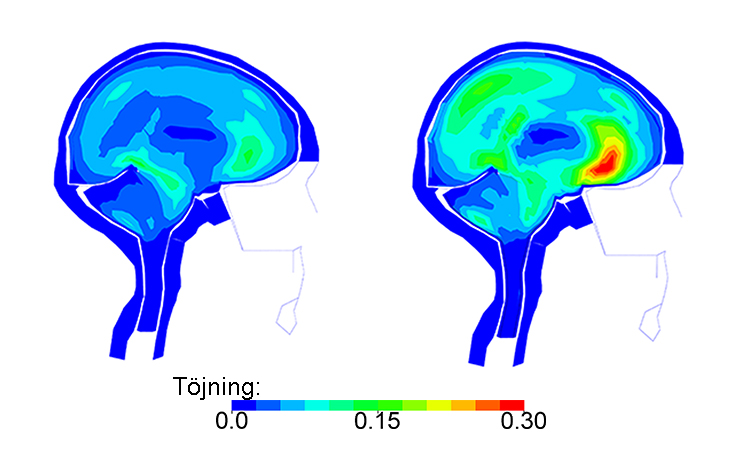Simulations show how helmets would have protected bike crash victims' brains
Bicycle helmets can reduce the risk of concussions by 54 percent, and drastically cut the risk of skull fractures, according to a study at KTH Royal Institute of Technology.

Published in the journal, Accident Analysis & Prevention, the findings are based on computer-simulated reconstructions of actual bike crashes in which the riders' wore no helmet and sustained head injuries.
KTH neuronics researcher Madelen Fahlstedt says the simulations of the crashes — and their impact on the brain — drew upon data from the U.S. National Institutes of Health Visible Human Database, which captures the complex behavior of soft tissues.
"Together with researchers in Leuven, Belgium, we have recreated kinematics of three bike accidents where riders lost control of the situation, fell and hit their head," Fahlstedt says. "We captured the cyclists' movements during the accidents and then applied the kinematics in terms of speed, just before the blow to the head, on a detailed computer model."
To assess the impact on the brain, the researchers compared the results of their simulations with CT images, in which bleeding was evident in the brains of the crash victims. Then, they conducted simulations with and without helmets to see what would happen.
"We can see how much the brain tissue

is stretched in the collisions, and that the tissue is stretched most in those areas where the impact occurred," she says.
In the reenactment of these three crashes, an ordinary bicycle helmet reduced the brain tissue's stretch rate between 33 to 43 percent, she says. "Given the factors in our study, we have also been able to see a reduced risk of 54 percent for concussion when using bicycle helmets."
Not only do helmets decrease stress on brain tissue, they also reduce the risk of skull fractures, she says.
"We saw a great reduction of stress on the bones, as a result of wearing a bike helmet, from 80 megapascals down to 10 megapascals. This figure indicates how much load you put on a given surface, and translated into more understandable terms, this means a reduction from 100-percent risk of skull fracture down to 10 percent for those wearing helmets."
Fahlstedt adds that helmets today are optimized to prevent skull fractures, so the finding is not surprising.
While it may not be news that helmets protect bicyclists' heads, few studies have gone beyond epidemiological surveys to accurately map the cause-and-effect relationship between helmets and protection, she says.
The article, "The protective effect of a helmet in three bicycle accidents - a finite element study", by Fahlstedt and colleagues Svein Kleiven and Peter Halldin, is available online in the journal Accident Analysis & Prevention.
Peter Larsson/David Callahan

